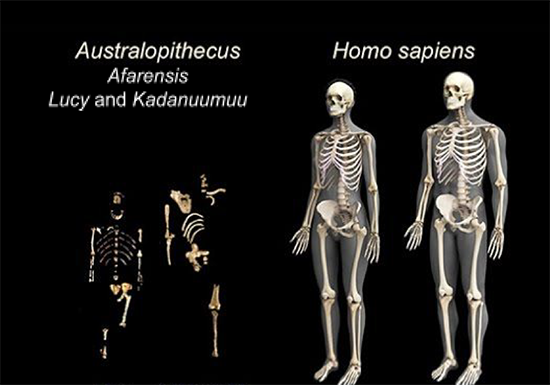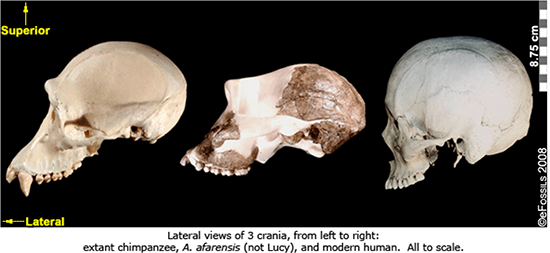Did Humans Evolve to Live in Pairs?
Australopithecus afarensis, an extinct hominin species and potential ancestor of modern humans (Homo sapiens), could have been a pair-bonded species. In living species, the differences between typical male and female bodies, or sexual dimorphism, can indicate whether or not a species lives in pairs. For example, pair-bonded primates typically have similar body sizes and similar teeth, while those that live individually or in a group do not. However, there are no living species with sexual dimorphism like that of A. afarensis. Fossils show that males and females had very different body sizes, but had almost no differences in their teeth.

Lucy and Kadanuumuu are partial fossilized skeletons of a female and male Australopithecus afarensis. They have striking differences in body size, especially compared to the difference between female and male Homo sapiens.
If the species was not pair-bonded, they should display full sexual dimorphism with large differences in both teeth and body size. Thus, paleoanthropologists have hypothesized that A. afarensis was either shifting towards being pair-bonded or completely pair-bonded but retained size differences. A larger size may have been advantageous for inter-male competition or for protection from predators. If these hominins were pair-bonded, this could mean that the origins of modern human relationships have deep roots in time.

The canine tooth of Australopithecus afarensis (center) is more like a modern human (right) than a chimp (left).
By Kaya Borlase (’21)

